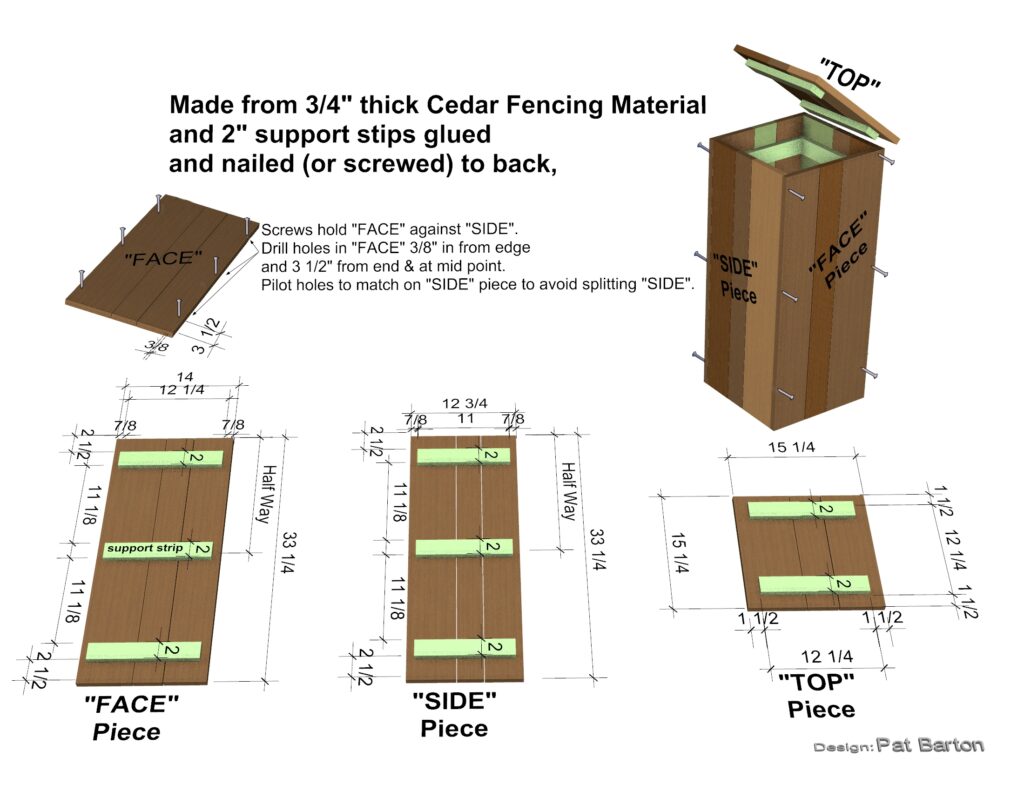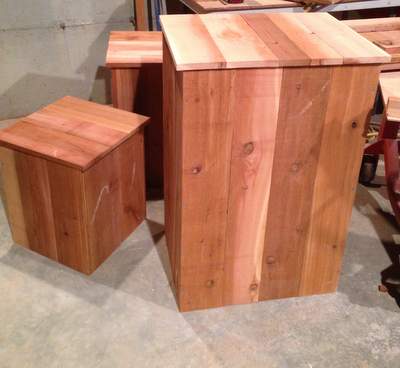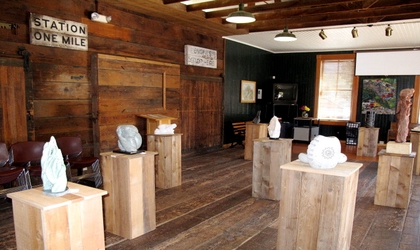Home » Carve » Experience » Getting Started » Building a “Take Apart” Cedar Pedestal

Take apart cedar pedestals are a response to several needs:
This design has proven itself starting in 2011 and over the course of a one day workshop in October 2013, 8 members build over 17 pedestals. This article tells you about how to build your own.
Below are the instructions and diagram. ([Click Here] to download a PDF of these instructions)

Tools Needed
To some, these thoughts on safety may seem redundant or unnecessary, but years of experience and some research show that not only mentioning safety but actually reading a list like the one below people make less mistakes and makes life better for everyone, go figure.



Take Apart Cedar Pedestals by Pat Barton is licensed under a Creative Commons Attribution-ShareAlike 4.0 International License
Spring of 2018 another pedestal building workshop was held.


We need some kind of descriptive text here.